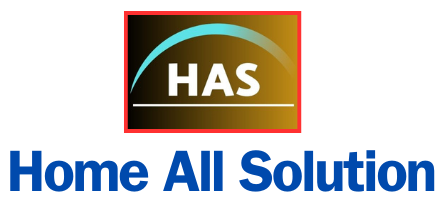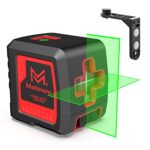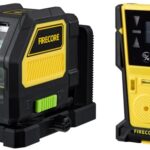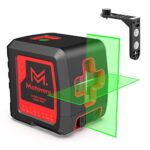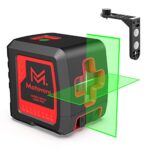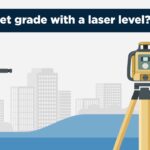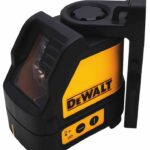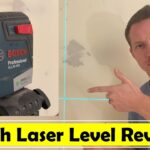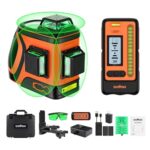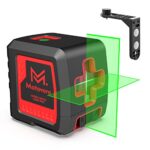Using a laser level without a tripod might seem challenging. But it’s entirely possible with the right techniques.
Laser levels are essential for many projects, from home renovations to construction tasks. While tripods offer stability, you don’t always need one. Understanding how to use a laser level without a tripod can save you time and hassle. This guide will show you practical ways to achieve precise measurements and alignments without relying on a tripod.
Whether you are a DIY enthusiast or a professional, these tips will help you utilize your laser level effectively. Let’s dive into the methods and tricks to get the most out of your laser level without the extra equipment.

Credit: laserslevel.com
Introduction To Laser Levels
A laser level is a tool that projects a straight line. It helps in aligning objects. This tool is very accurate. Builders and DIY enthusiasts use it. It makes tasks easier. It can be used indoors and outdoors. The laser level saves time. It also reduces errors. There are different types available. Some are simple. Others are more advanced.
Laser levels have many uses. They are used in construction. They help in installing tiles. Hanging pictures is easier with them. They also help in landscaping. Some use it for plumbing. It helps in framing walls. It is good for ceiling work too. The laser level is versatile.
Benefits Of Using Laser Levels Without Tripods
Laser levels are easy to carry without a tripod. They fit in small bags. Lightweight and compact design makes it simple. No heavy equipment to lug around. This makes projects more flexible. You can take them anywhere. Move them quickly from place to place. Perfect for tight spaces. Portable laser levels are great for quick jobs. They save time and effort.
No need to buy a tripod saves money. Less equipment means less cost. Laser levels without tripods are often cheaper. Fewer parts to maintain. Fewer parts to break. This makes them a budget-friendly choice. You can start your project with less investment. Perfect for small projects. Cost-saving is always a benefit.
Types Of Laser Levels Suitable For Use Without Tripods
Self-leveling laser levels are very easy to use. These tools can adjust themselves automatically. Users do not need to manually set them. They are perfect for uneven surfaces. Self-leveling lasers ensure accurate results. They are ideal for many projects.
Manual laser levels are more affordable. Users must adjust them manually. They offer great control over the leveling process. Some prefer this manual control. These levels are good for simple tasks. They are lightweight and easy to carry.

Credit: huepar.com
Essential Tools And Accessories
Using a laser level without a tripod is easy with the right techniques. Place it on a flat, stable surface. Ensure the laser is aligned correctly for accurate measurements.
Mounting Brackets
Mounting brackets are very useful. They help hold the laser level steady. You can attach the bracket to a wall or other surface. This keeps the laser level in place. Mounting brackets come in different sizes. Choose the right one for your laser level.
Wall Mounts
Wall mounts are another option. They are easy to use. Simply fix the mount to a wall. Then attach the laser level to it. This method is very stable. Wall mounts are good for high places. Make sure the wall mount is secure.
Step-by-step Guide To Using A Laser Level Without A Tripod
Ensure the surface is clean and flat. Remove any debris or obstacles. This will help the laser level stay steady. Use a damp cloth to clean the area. Allow the surface to dry completely. A clean surface helps with accurate measurements.
Place the laser level on the surface. Adjust it until it is level. Use a bubble level if needed. Make sure the laser line is visible. Adjust the laser to the desired height. You may need to use shims or blocks to get it just right. Ensure the laser is stable and won’t move.
Tips For Accurate Laser Leveling
Position the laser level on a stable surface, like a table, to ensure accurate leveling without a tripod. Adjust the device carefully to maintain a level line across your workspace.
Ensuring Stability
Place your laser level on a flat, stable surface. Walls, floors, or tables work well. Use a spirit level to check the surface. Adjust the laser level until it’s perfectly horizontal. Use non-slip pads if needed. They prevent movement and ensure accuracy. Keep the area clear of vibrations. This helps maintain stability during use.
Double-checking Measurements
Mark your reference points on the wall. Measure the distance between them. Use a tape measure for this step. Turn on the laser level. Align the laser beam with your reference points. Re-check the measurements. Make sure they match your initial marks. Repeat the process a few times. This ensures your readings are consistent. Accurate measurements are crucial for precise leveling.
Common Mistakes To Avoid
Surface bumps can affect your laser level. Always check the surface first. Use a flat, stable surface. Uneven areas will give wrong readings. This is a common error.
Calibrate your laser level before each use. Incorrect calibration can lead to errors. Always follow the manual for calibration steps. Take your time to get it right.
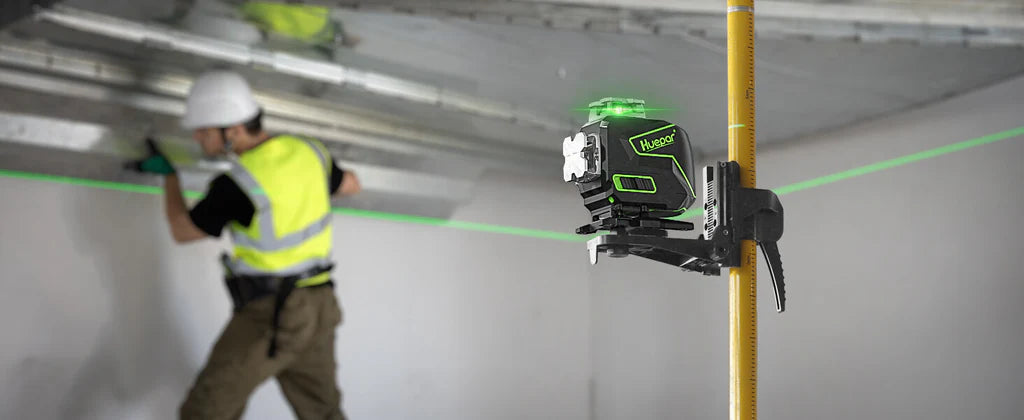
Credit: huepar.com
Maintenance And Care
Use a soft, dry cloth to clean the lens. This avoids scratches. For tough dirt, a slightly damp cloth works best. Always dry the lens well after cleaning. Do not use strong chemicals. These can damage the lens. Regular cleaning keeps the laser accurate.
Store the laser level in a cool, dry place. Avoid direct sunlight. This can harm the device. Keep the laser level in its case. It protects against dust and damage. Remove batteries if storing for a long time. This prevents leaks and damage.
Frequently Asked Questions
Can I Use A Laser Level Without A Tripod?
Yes, you can use a laser level without a tripod. Place it on a flat surface, or mount it on a wall.
How To Stabilize A Laser Level?
Stabilize a laser level by placing it on a stable, flat surface. Ensure it does not wobble or shift.
What Surfaces Work Best For Laser Levels?
Flat, stable surfaces work best for laser levels. Examples include tables, floors, or mounted on walls.
Are There Alternatives To Using A Tripod?
Yes, alternatives include using a wall mount, brackets, or placing on a stable, flat surface.
Conclusion
Using a laser level without a tripod can seem tricky at first. But with practice, it becomes easier. Follow the tips in this guide for accurate results. Remember to keep the surface stable and level. Safety should always come first.
Proper use of a laser level can save time and effort. Experiment with different methods and find what works best for you. Happy leveling!
